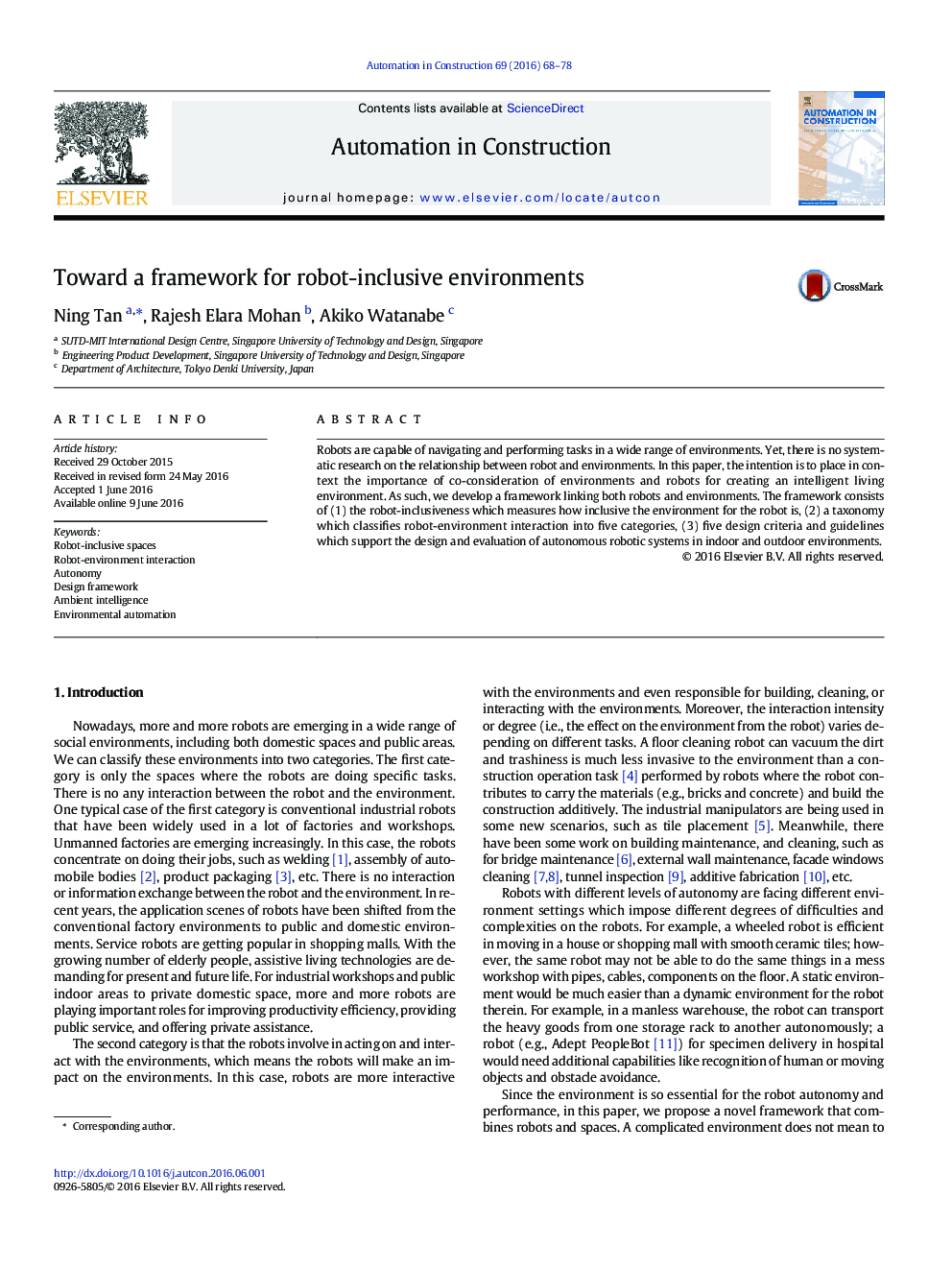| Article ID | Journal | Published Year | Pages | File Type |
|---|---|---|---|---|
| 246213 | Automation in Construction | 2016 | 11 Pages |
•Universal framework for framing robot-inclusive environments.•Robot-inclusiveness for measuring how inclusive the environment for the robot.•Taxonomy for classifying robot-environment interaction into five categories.•Five design criteria for design and evaluation of autonomous robots.
Robots are capable of navigating and performing tasks in a wide range of environments. Yet, there is no systematic research on the relationship between robot and environments. In this paper, the intention is to place in context the importance of co-consideration of environments and robots for creating an intelligent living environment. As such, we develop a framework linking both robots and environments. The framework consists of (1) the robot-inclusiveness which measures how inclusive the environment for the robot is, (2) a taxonomy which classifies robot-environment interaction into five categories, (3) five design criteria and guidelines which support the design and evaluation of autonomous robotic systems in indoor and outdoor environments.
